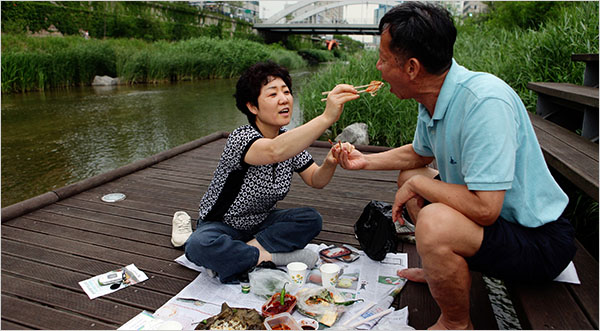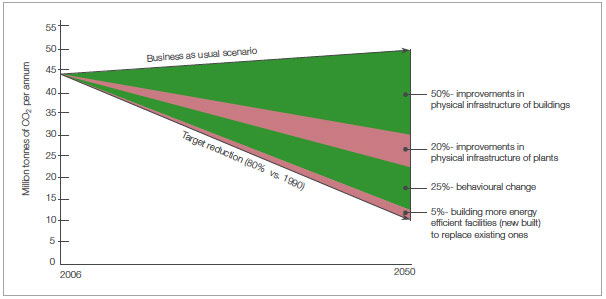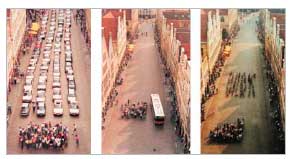
Under the title “Trolls in the Park,” there is an outdoor public art display in Suginami’s Zenpukuji park: a quiet park with two ponds, many ducks and wonderful mature trees now turning colors. If you have a chance to attend before November 22, I recommend a visit.
It was late in the day, and my photos turned out blurry. Above is Matthew in front of a manga-inspired sign, one of a series that blends the natural world of the park with the narratives and scene-shaping of comic books. Below is one of a series of birdhouses with men’s ties.

Much better photos are available on the Art in the Park website. There’s also a funny blog (in Japanese) by the artist Toshiaki Tomita who calls himself a bad guide who doesn’t know anything about the park. Below is a photo of fall foliage, reason enough to visit the park.

The idea of temporary art in the park– enlivening nature with culture and vice versa– appears to be gaining international interest. This Tokyo event has many British artists, and I read about a similar event in Singapore (through December 27 in the Singapore Botanic Gardens).



